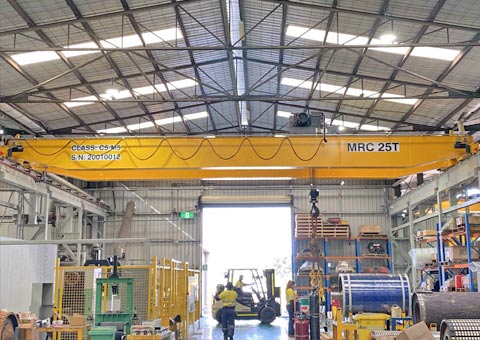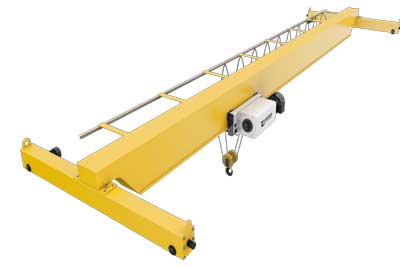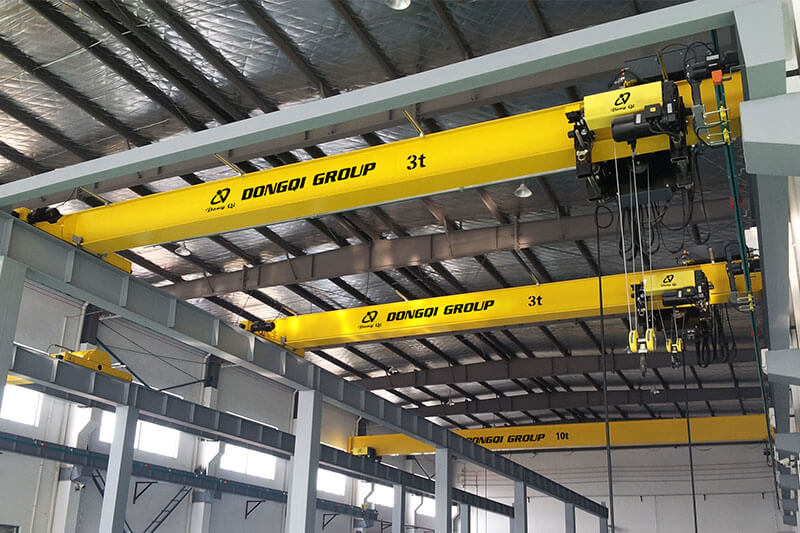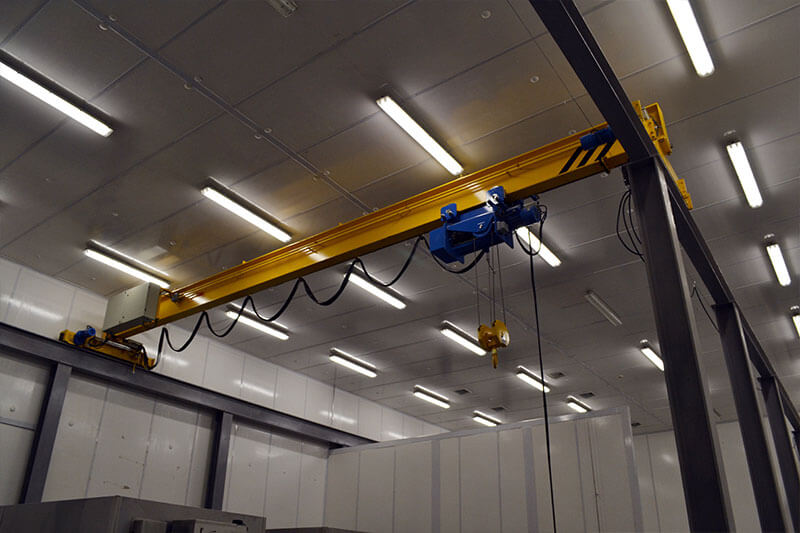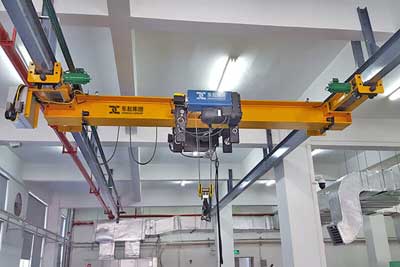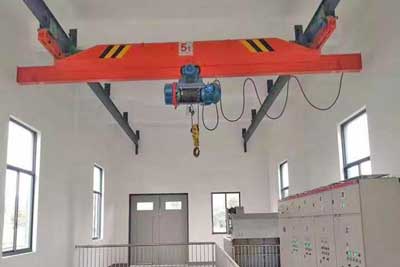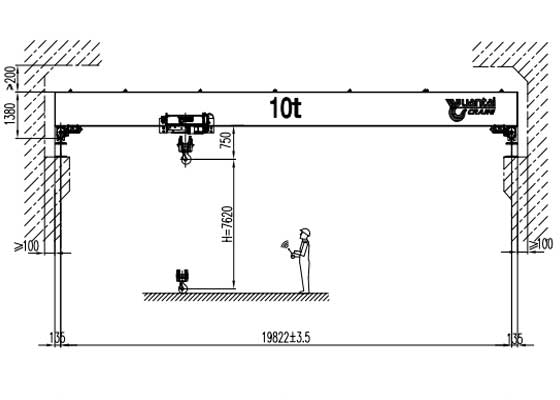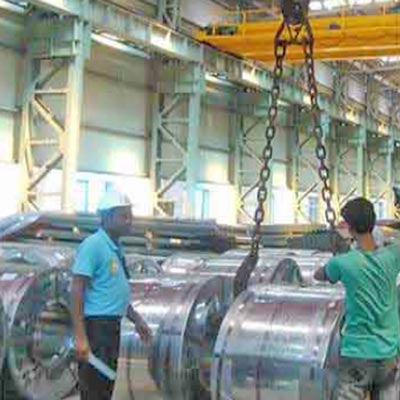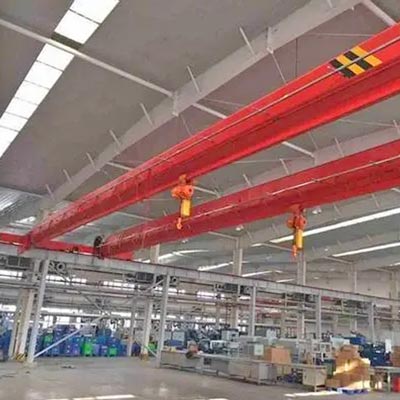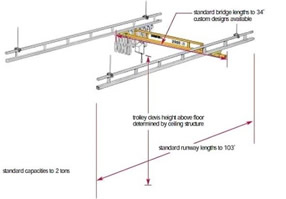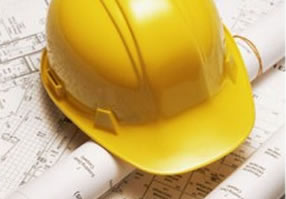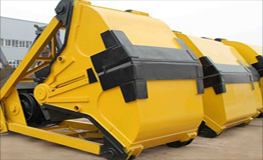What are the uses of overhead cranes?
It can be risky and time-consuming to move bulky, heavy, and awkward goods through the aisles and floor of a manufacturing facility. To save time and energy, loads can be readily lifted, lowered, and transported through the vacant space by using an overhead crane. The crane's movement is controlled by a variety of control devices by specially trained operators. When considering movement options, it is important to consider the available area as well as the feasibility of adding an overhead crane in your applications.
Warehousing
When considering the requirement for an overhead crane, the first industry that springs to mind is warehousing, where supplies, equipment, and materials are constantly transported, positioned, and prepared. The timely transportation of heavy items from storage to the shipping dock is a primary advantage of using an overhead crane in warehousing.
Assembly
Large-equipment assembly industries require a way to lift and move partial assemblies from one site to another for completion. Forklifts, AGVs, and other means of material handling are insufficient and unsafe, necessitating the deployment of an overhead crane. Assemblies can be easily shifted as part of the manufacturing process.
Transportation
The same rules apply to transportation as they do to warehousing, where big, bulky products must be loaded onto planes, trains, and trucks. Large goods can be readily stacked for delivery using overhead cranes. This is especially true in international commerce, where large containers and goods must be lowered into ship holds.
Equipment Repair
When a punch press or other production equipment needs to be repaired, overhead cranes aid in the process by gradually moving and arranging pieces for easy access. Heavy equipment can be moved from its permanent site to a repair shop and then returned using gantry and bridge cranes. Lifting machinery up and over other equipment to be placed at a repair station is made easier by overhead cranes.
Industries that Use Overhead Cranes
The supply change that transports needed raw materials and components to assembly activities is a critical factor in any industrial operation. Forklifts, pallet jacks, and AGVs can all help with these tasks in many circumstances. For the safety of workers and the effectiveness of the operation, a more accurate approach is required for more bulky items. Overhead cranes become indispensable in these scenarios.
Overhead cranes, unlike other industrial equipment, must be constructed and designed to fit the job, regardless of their size. An overhead crane that is suitable for vehicle manufacturing may not be suitable for shipping operations. Overhead cranes used in steel production are a good example of this.
Because of their safety, time savings, and ease of operation, overhead cranes have been an indispensable feature of countless production operations since their introduction during the first industrial revolution.
Auto Industry
Material handling and the supply chain, as well as lifting and transport applications, are all served by overhead cranes in the car sector. Overhead cranes are used in press plant operations to carry and store dies and tools, as well as maintain lines stocked. Workers at assembly factories rely on overhead cranes to increase their productivity and eliminate the need to lift goods.
Overhead cranes are used in every function of an automotive manufacturing plant because they save time and are more convenient. Their application enhances production and minimizes supply chain disruptions that cause unnecessary delays.
Steel
The ability to perform in hard conditions at rising temperatures with high grade dust and strong vibrations is the fundamental criteria for cranes used in the steel industry. Ladle cranes are strengthened and stabilized to ensure that the ladle is handled safely and efficiently. For the delivery of components such as molds for casting and the supply of casting pieces, double girder overhead cranes are used.
Overhead cranes are widely used in the steel industry for safety and efficiency. Tundish, slab, scrap, billet or ingot, coil, and foundry cranes, to name a few, are all types of ladle handling cranes.
Plastics
The ability to perform in hard conditions at rising temperatures with high grade dust and strong vibrations is the fundamental criteria for cranes used in the steel industry. Ladle cranes are strengthened and stabilized to ensure that the ladle is handled safely and efficiently. For the delivery of components such as molds for casting and the supply of casting pieces, double girder overhead cranes are used.
Shipbuilding
Due to the nature of the materials necessary to build a ship, shipbuilding, like the steel industry, makes considerable use of overhead cranes. Jib crane , gantry crane, and overhead cranes are the three types of cranes most commonly employed in the business. A chain or wire rope hoist will be utilized, depending on the type of material to be moved.
Material handling throughout the assembly process is the primary role of overhead cranes in shipbuilding. Each phase of shipbuilding, including processing, assembly, fieldwork, launch, rigging, and delivery, requires the employment of an overhead crane. Steel plate hooks and various types of chain hoists with electric motors are included in shipbuilding overhead cranes that are specifically designed to match the space requirements.
Biomass
Waste, refuse, garbage, slag, sludge, and straw bales are all handled using biomass overhead cranes. Each form of garbage is handled by a different crane. Jib, gantry, and overhead cranes with chain and wire rope hoists are used in the biomass business, just as they are in other industries.
When opting to acquire a biomass crane, several factors must be considered, including truck delivery times, tonnage, biomass density, and the size and dimensions of the storage area. A bucket, orange peel, or clam shell device is used to grip the load in a biomass hoist.
Gas and Petroleum
Because of the flammability of gas and petroleum, overhead cranes must be built to prevent the substance from burning. They're made of spark-resistant, explosion-proof materials. Designing cranes for offshore drilling locations is a difficulty for the oil and petroleum business. Initially, the business relied on land-based designs that were modified to match the specific circumstances.
Because offshore platforms face unique challenges, such as waves rocking a boat during loading and unloading, cranes are built to bear the load while also taking into account the load's distance from the crane. The mounting structure, as well as other relevant environmental variables, are also important considerations.
Food and Drink
In the food and beverage sector, hygiene and sanitation are the most important qualifications for material handling. Overhead cranes are used to transport rail-mounted containers for production or storage in the food processing industry. The primary reason overhead cranes are employed in food production is for efficiency, albeit keeping the cranes clean is a concern.
In the food sector, controlled surroundings are critical. Producers work to manufacture lifting equipment that is custom tailored to fit the environment in order to fulfill the needs and high standards.
Semiconductor
The semiconductor industry uses a range of heavy components that necessitate hygienic lifting solutions that do not contaminate the assembly. To fulfill industry quality standards, overhead cranes must be precise, accurate, clean, and efficient.
An overhead crane must meet clean room standards in order to be recognized by the semiconductor industry. Cleanrooms, unlike other material handling technologies, are closely checked for particle content of the dust in the room. Producing overhead cranes for the semiconductor sector becomes even more difficult as a result of this.
Mining
Because of the harsh nature of the mining industry, the sorts of overhead cranes that can withstand the conditions are in high demand. For maintenance and service on underground mining equipment, the mining sector relies on overhead cranes. The corrosive climate of mining operations causes equipment to deteriorate quickly.
Cranes for mining are large, heavy-duty machines capable of transporting many tons of material and equipment. They're made of metals that can withstand heat, dust, and moisture. Overhead cranes must be able to operate efficiently and continuously in adverse situations.
Paper
Because paper rolls are often destroyed by the slightest hit, the paper business requires high duty cranes that can handle materials with remarkable precision and gentleness. Paper is manufactured in incredibly large, heavy rolls that must be handled with care.
Cranes for the paper industry feature automated control systems that can be utilized for pulp production and paper manufacturing to protect workers. The crane's speed must be carefully controlled for proper material handling, and it must be fitted with slings for loading and unloading paper scrolls.
